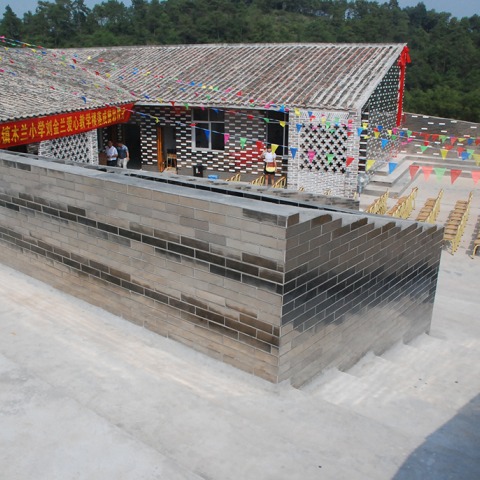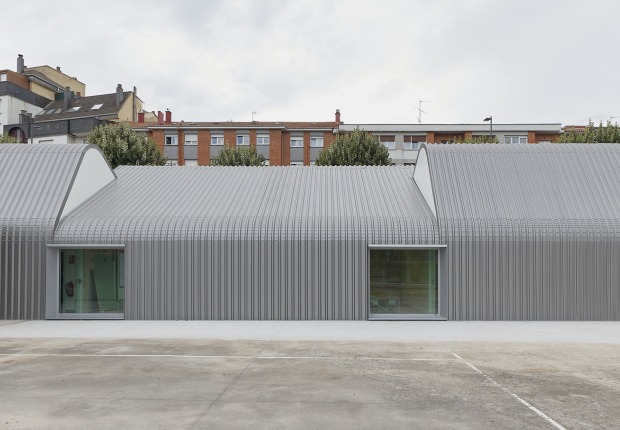The Mulan Primary school is located close to Huaiji, a county of approximately 100,000 in Guangdong Province. Working with the local education authority and a Hong Kong based charity, we were asked to expand an existing primary school of 5 classrooms by adding an additional building of 6 classrooms.
The motivation behind this expansion is through the government’s desire to consolidate the total number of primary schools. In the process, some older schools will be demolished and others enlarged to make up for the loss and also to provide for a larger sphere of population distribution. The existing school is a simple tiled roof block with an overhanging eave supported on columns. The building forms part of an edge of a wall, which frames a courtyard. The strategy of the design was not only to extend the school but also to extend the courtyard and organize the site through a series of open, linked spaces.
The new building defines the edge of the site as a U-section with one side of the courtyard left open. The roof plane is a continuous ribbon that rises from the ground as a series of steps forming a new public space and outdoor classroom that then becomes roof, before dropping down again to form a ground plane that defines the edge of the courtyard.
The steps are punctuated with small micro-courtyards that continue into the library. The roof is clad in old, recycled tiles collected from numerous villages in the local area. At three moments the roof tiles become vertical walls and help direct run-off water to the ground. A perforated screen wall encourages climbing plants that then cool the air in the hot summer months. Smooth, mirror-tiles are deployed on the courtyard façade and on the vertical faces of the steps. This creates visual mirages and distorted reflections that animate as children play in the courtyard and steps. Through the provision of this open public space and library, the school can become a community focal point opened to all as the village evolves.
Text.- Rural Urban Framework (RUF)
CREDITS.-
Location.- Huaiji County, Guangdong Province, China
Commissioning donor.- Power of Love Ltd.
Additional donors.- Luke Him Sau Charitable Trust.
Design.- John Lin and Joshua Bolchover.
Landscape design.- Dorothy Tang.
Project manager.- Maggie Ma.
Project team.- Ho King Hei, Huang Zhiyun, Crystal Kwan, Jessica Lumley, Yau Ching Kit.
Commission Date.- May 2010.
Completion Date.- Sep 2012.
Size: 500 m2
Total Cost.- 90,000 USD (573,000 RMB)
Unit Cost.- 180 USD/ m2 (1,150 RMB/ m2)





































